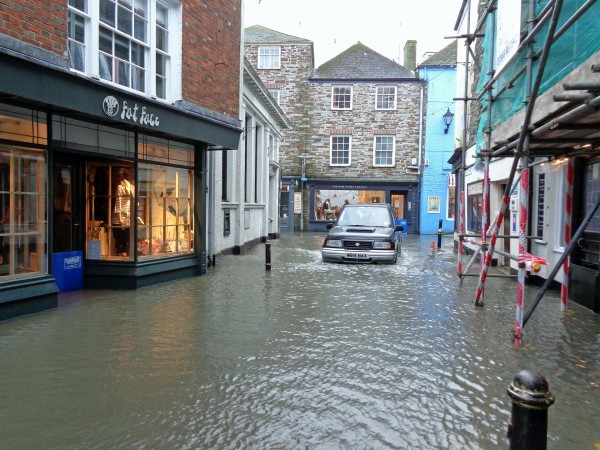Drainage now less able to cope with increased demands and heavier rainfalls
Flooding is to worsen in the UK due to climate change. More rain falls in shorter time frames and the increase of hard surfaces causes floods.
A combination of climate change and continued development is predicted to exacerbate the already worrying flooding situation in the UK. This is bad news indeed considering the amount of flooding experienced around the country in recent years; it seems the graphic flood-related images online and in news media featuring roads totally submerged and homes under several feet of floodwater could be here to stay.
A Major Problem
The London borough of Sutton is one of many areas in built up towns and cities attempting to address very real flooding problems. This south west area of the capital experienced no less than 39 cases of flooding during the heavy rainfall periods in June 2016.
In one of the flooding episodes, on June 7th, a motorist swimming to safety from his nearly submerged car made international news amongst many dramatic images of flooding in London when heavy bouts of rain falling in a short time period hit the capital. In Sutton and South London generally, a tenth of the area’s yearly rainfall struck in barely 75 minutes.
That’s a lot of water for the drainage system to cope with, and it’s likely to become more pronounced as climate change is bringing about shorter and heavier bouts of rain. Another issue is the increase in hard surfaces as already built up areas such as London expand, and more previously absorbent land surfaces such as grass and pasture become covered with concrete, tarmac and new buildings.
This means there’s less opportunity for rain water to be absorbed naturally and gradually into the ground; instead more of it runs off the hard surfaces and into the drains meaning they have more water to cope with.
Areas “not designed” for Heavy Rainfall
Sutton councillors say certain flood trouble spots simply weren’t designed to handle such heavy rainfalls. For example, a flood hot spot in the Wallington area – where the dramatic image of the motorist swimming to safety was taken – has been described by a senior Sutton Council officer as “not designed to cope” with heavy downpours.
Action Being Taken
In the case of the area of the Manor Road area of Wallington discussed above, the local authority clear the gullies under the roads every three months to try and combat what is a vulnerable area to flooding – and back this up with frequent drain clearance work.
Monitoring measures to warn motorists of increased flood risks is a possibility so as to give drivers the chance to avoid certain areas. Devices to monitor water levels in drains are being considered; the hope being that episodes of drivers being rescued from submerged cars would be avoided as traffic routing adapts to reflect the flood risk.
Further Action
In the end there’s only so much that can be done in terms of maintaining the existing drainage system. Environmental measures such as building in flood coping infrastructures into future developments, and improvements to drainage infrastructure such as London’s mammoth Thames Tideway Tunnel project, may have to be considered as the flood risk worsens.
Fraser Ruthven is the Marketing Associate for London Drainage Facilities, one of London’s leading drainage companies. London Drainage provides a wide range of drainage diagnostic and repair services in and around London.
